A great set of Speakers can be the most important element in your music or home theater setup, whether it’s a multi-channel surround sound system complete with Dolby Atmos for satisfying your love of cinema, or a stereo rig to make sure you’re getting the most out of your vinyl record collection.
But as you will surely learn, it’s a jungle of speaker brands out there, all offering a dizzying range of speakers, including big and tall floorstanders, bookshelf speakers, Bluetooth speakers, soundbars, subwoofers, party speakers, and more.
We review and cover a ton of speakers, and through our experiences, we’ve identified some of the best speaker brands in the market and compiled a list that includes a brief history, notable products, accolades, and our top pick for each brand. Let’s go.
JBL
Accessibility meets performance
Fast-forward 25 years or so to the ’70s, and JBL is bigger than ever. Sold to Harman International in 1969, the following year JBL would hit pay dirt with its legendary JBL L-100 loudspeakers, as well as its prolific line of professional studio monitors. Faltering a bit through the ’80s and ’90s, at least in terms of mass-market appeal, Samsung acquired Harman Kardon in 2017, which brought about a major resurgence for the JBL label.
When it comes to versatility, JBL is truly a jack of all trades and even the master of a few. Whether you’re an aspiring audio engineer, home cinema connoisseur, or the average listener who just wants a durable and weatherproof Bluetooth speaker that sounds great, JBL has reliable audio products that satisfy nearly every niche.
What is JBL’s calling card?
Portable audio, bar none. If you’re looking for a sleek, well-armored, and powerful-sounding Bluetooth speaker, JBL is the way to go. And two of our favorite JBL speakers in the portable category are the Authentics 300 and and Flip 6.
Engineered to deliver loud, articulate, pulse-pounding sound for both indoor and outdoor environments, the Authentics 300 and Xtreme 4 are also long-lasting in terms of battery life, feature adjustable EQs that can be tweaked using the JBL Portable app, and are available in a number of different shell colors.
Additionally, JBL are the makers of some pretty serious party speakers, including the 1,100-watt PartyBox Ultimate and the PartyBox Stage 320 that is capable of powering any large gathering with huge volume and clarity.
In 2024, though, JBL is also trying to do something unique — bridge the gap between the simplicity and connection versatility that the younger generations of audio users have gotten used to with easy-to-use products like soundbars and Bluetooth speakers, with the more sophisticated and refined sound that component-based systems offer. The result is JBL’s new MA (modern audio) amplifier and Stage 2 speaker lineup.
Read our full reviews of the JBL Authentics 300 and JBL PartyBox Ultimate
What’s the best JBL speaker?
While “best” is always relative to the listener, we’d like to recommend a JBL speaker that we feel is one of the best-sounding and coolest-looking of the brand’s current lineup, and that’s the JBL L100 Classic.
A design introduced back in the company’s 1970s heyday, the modernized L100 is a faithful homage to the original speaker’s aesthetic, complete with retrofitted cabinetry and the iconic Quadrex foam grille (available in black, burnt orange, and dark blue).
An audiophile’s dream come true, the L100 Classic bookshelves present a mesmerizing soundstage, with robust low frequencies, incredible midrange and high-range performance, and a physical design that is going to draw plenty of jaw-drops from all your hi-fi friends (especially when they figure out how much you spent on them).
Bowers & Wilkins
Speakers tailor-made for audiophiles
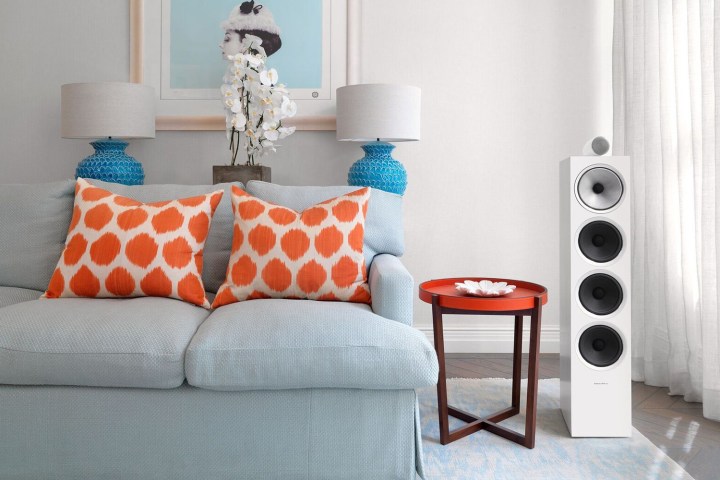
The formative years of Bowers & Wilkins, a royal name in the world of hi-fi, can be traced to an electronics shop opened by John Bowers and business partner Roy Wilkins. As the company began designing custom intercom equipment for schools and churches, John Bowers jumped on the audio-development train and never looked back.
Stepping away from consumer tech retail, Bowers founded the official B&W Loudspeakers LTD label in 1966. Operating in a production facility behind the main storefront, the release of the 1967 P1 speaker would place B&W on the map.
These days, B&W is the go-to brand for developmental reference, meaning all the other big hi-fi names are designing their products against the high standards already set by B&W. With professional studio monitors set up at both Abbey Road Studios and Skywalker Sound, and partnerships with major European car companies including Jaguar, Volvo, McLaren, Maserati, and BMW, B&W delivers flagship designs and performance for residential, commercial, and vehicular listening spaces.
Oh, and let’s not forget to mention that B&W also produces some pretty awesome soundbars and headphones, too.
What is Bowers & Wilkins’ calling card?
B&W is best known for incredible lifestyle designs, backed up by true, high-end audiophile performance. From the company’s up to the formidable 800 Series Diamond lineup, B&W puts painstaking detail into every single one of its cabinets, drivers, and tweeters, resulting in loudspeakers that deliver un-compromised home audio.
Arguably, the 700 series is one of the brand’s more price-accessible speaker families (ranging from the mid $1,000s to $7,000), touting such features as a solid body housing for the Carbon Dome tweeter, dynamic soundstaging for home cinema, and dedicated music sessions, and a multitude of floor standing and bookshelf designs in brilliant finishes.
For something different, consider the well-received 607 S3, one of our favorite speakers of the year.
What’s the best Bowers & Wilkins speaker?
For the best in B&W, look no further than the industry-lauded 801 D4 tower speakers.
Available in four alluring finishes and backed up by 40 years of developmental genius, the 801 D4 employs Matrix bracing and armored Turbine Heads for the midrange cones, all in the name of decreased resonance, which means accurate soundstaging beyond your wildest dreams.
And at $20,000 a pair, you can either buy the greatest pair of speakers ever made or matriculate at a four-year university for a semester or two. The choice is yours, dear listeners.
KEF
Decades of intuitive engineering meet the wireless age
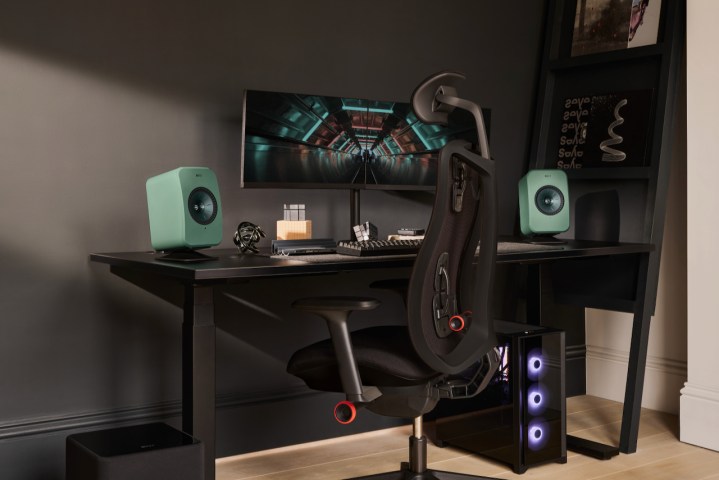
KEF is another British brand that delivers an arresting blend of style, performance, and versatility, netting plenty of industry recognition and a dedicated following of fans the world over. With roots dating back to 1961, company founder Raymond Cook, an electrical engineer, started KEF on the campus of Kent Engineering & Foundry (where KEF gets its moniker).
Aspiring to bring generation after generation of innovations to the world of speaker technology, KEF has spent just as much time researching and testing new ways to improve upon existing loudspeaker peripherals as they have on actual production.
With breakthroughs and other noteworthy finds being published in some of the most revered audio publications, including the Institute of Acoustics and the Audio Engineering Society, KEF’s analytic backbone is a driving force across all its product categories, from wireless hi-fi to groundbreaking flagship tower and bookshelf designs.
What is KEF’s calling card?
Effectively bridging the gap between ultra-high-end performance and accessible pricing, KEF is a dominant force in both the passive and powered speaker markets, but it’s the latter where the brand truly dials in its gravitas. Their innovative Uni-Q speaker design and frequency-absorbing MAT metamaterial technology deliver beautifully accurate sound.
Have you heard of the KEF LS50 Wireless II? Available in black, red, gray, and white, these wireless bookshelf speakers deliver one of the best-sounding and most flexible streaming-audio experiences you’ll ever come across.
Featuring AirPlay 2 and Google Chromecast compatibility, as well as wired connections for TVs, turntables, and other AV components, along with 24bit/384kHz, Roon Ready, DSD256, and MQA file support for all the richest listening sessions, the KEF LS50 Wireless II is the wireless hi-fi option we all wish we had.
If you’re looking for floor-standing speakers, consider the . With sleek finishes in black, white, and walnut, these speakers are engineered to bring out details in your music and movies that other speakers can’t match.
However, as excellent as KEF’s speakers are, their price tags can be a bit much to swallow for some folks, with the LS50 Wireless IIs starting at $2,500 and it’s popular LSX IIs running $1,300 a pair. But all hope is not lost, with KEF launching its most affordable version of the latter, the LSX II LT Wireless Hi-Fi Speakers, a streamlined version of the LSX IIs that retail for $1,000.
What’s the best KEF speaker?
That’s a tough call. Seeing as we’re pressed for an answer, we’re going to put our money on the showstopping KEF LS60 Wireless, another amazing pair of wireless hi-fi speakers.
Sold in dark blue, white, and black finishes, these beautiful tower speakers take everything we already know and love about the LS50 Wireless II and expand each set of amazing features. The LS60 Wireless tower speakers are capable of connecting to Wi-Fi, AirPlay 2, Chromecast, and Bluetooth, and the KEF Connect app gets you additional access to Spotify, Tidal, Deezer, Amazon Music, and other top-notch streaming platforms. You’ll also be able to decode PCM files up to 24bit/384kHz, along with the ability to listen to MQA and DSD formats.
Yes, KEF makes bigger and more powerful (and more expensive) passive loudspeakers for home cinema and wired audio applications, but it’s the wireless category where KEF shines brighter than most — at least in our humble opinion. Thus, we’ll call the LS60 Wireless the best KEF speaker in our books.
Klipsch
For our at-home concerts and blockbusters
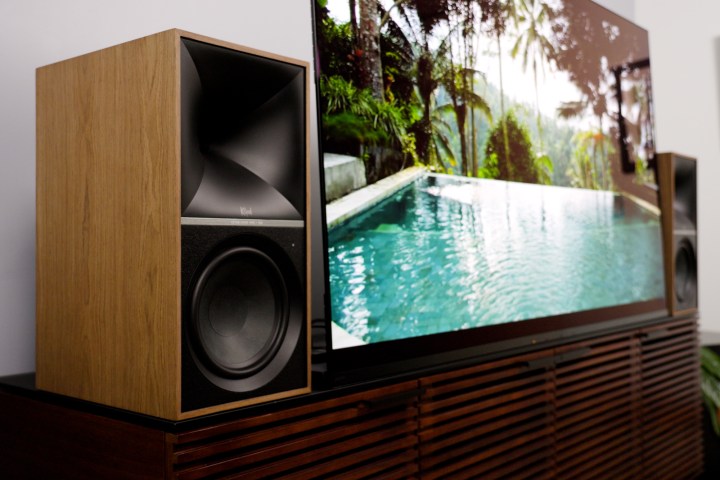
is a decades-vetted audio titan that kills it year after year, especially when it comes to rock-solid speakers designed for decibel-heavy music and cinematic tentpole flicks. If you’re a Metallica diehard or an action movie fanatic, whether you opt for a stereo setup or a full-surround package, Klipsch is going to be your best friend.
Founder Paul W. Klipsch was a locomotive engineer who . During his graduate studies at Stanford University in the 1930s, one of Paul’s peers suggested that speakers sound better when positioned in the corner of a room. Building upon this inspiring proclamation, Paul went to work designing the revered Klipschorn (an iconic Klipsch driver staple to this day) that was officially patented in 1945.
Only one year later, Mr. Klipsch went into the audio business under the Klipsch & Associates moniker, manufacturing the first wave of Klipschorn speakers in Hope, Arkansas, with assistance from a nearby cabinetmaker and the helping hands of Baldwin Piano Company. Teamwork makes the dream work, kids!
Fast-forward nearly 80 years and Klipsch is still thriving in the audio marketplace. Revitalizing some of the brand’s classic designs for the modern age, a Klipsch system can handle any sound challenge you throw at it, and at prices that our wallets and purses can handle, too.
What is Klipsch’s calling card?
With Dolby Atmos as the mightiest surround sound codec, especially in terms of floor-to-ceiling immersion, speaker companies have been at war to see who can deliver the greatest Atmos experience.
And whether that’s by way of towers and bookshelves with top-firing drivers or a complete surround sound kit to check off all your Atmos needs, Klipsch offers some of the most powerful, accessible, and versatile Atmos-ready speakers and systems on the market.
Billed as the , buyers have their pick of multiple speaker configurations, from 5.1 satellite packages to one of the biggest and hardest-hitting you’ll find on digital and brick-and-mortar shelves today.
What is the best Klipsch speaker?
We were geared up to feature a Reference series tower or pair of bookshelves for our best Klipsch laurel, but that’s when we remembered the perfect rating we gave the Klipsch’s The Fives when we reviewed them back in 2020. And while they’re pretty hard to come by now (you can still find them on Amazon, often refurbished), their bigger siblings, The Sevens and The Nines, also rank up there with some of the best powered speakers you can buy. These diverse, all-in-one speakers can connect to your TV through either HDMI ARC, digital optical, or analog outputs, but there are also phono, USB, and 3.5mm auxiliary connections.
And in terms of sound quality, the results are through the roof. The Fives, Sevens, and Nines all offer up some of the richest and most pulse-pounding stereo soundstages you’re going to find.
But Klipsch has never been known to rest on its laurels. This year, Klipsch broke into the portable Bluetooth speaker realm with its Music City range that included the rugged Klipsch Nashville speaker. Additionally, at CES 2024, the company announced a partnership with Japan’s Onkyo to develop a new modular soundbar system called Flexus that should be coming in the spring this year.
Read our full review of Klipsch’s The Sevens and The Nines.
Fluance
The audiophile’s best-kept secret
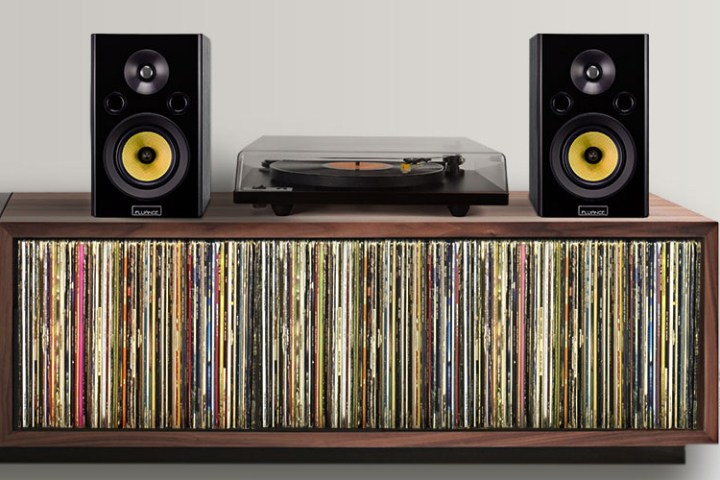
has only been around for 20 years or so, but in just two decades, the Canadian company has produced some of the greatest turntables and speakers for prices that may make you ask yourself, “Is this too good to be true?” (Hint: The answer is no).
When founder Deepak Jain launched Fluance in 1999, the man had one goal: to design audio peripherals that would deliver the kind of sounds normally relegated to live performances alone. You see, Deepak loved live music and would frequently go out of his way to see whatever local artists were rocking the dive bars and other noteworthy venues of Niagara Falls, Canada.
So when you buy a Fluance product, whether that’s a or a , you’re getting audio that’s tailor-made to get you as close to the onstage artist as possible, minus the sweaty mosh pits and many a buzzed uncle.
What is Fluance’s calling card?
Outside of masterful turntables, Fluance is perhaps best known for its , the top-shelf choice for the company’s , , and , with an array of color options for each.
Featuring everything from Neodymium tweeters for articulate high-frequency reproduction to expertly crafted cabinetry for decreased resonance and acoustic precision, when you buy a Signature speaker from Fluance, you’re taking home an audio product built for an enduring sonic experience like no other — and the prices are seriously affordable.
What is the best Fluance speaker?
This was another tough call, because, on the one hand, the is one of the coolest wireless speakers we’ve ever seen, but it’s a pretty niche product that might only appeal to a certain range of audiophiles and style-mongers.
In keeping with Fluance’s thing for quality and affordability, we’d like to put Fluance’s speakers at the top of the heap.
Whether you plan to use them as front or rear speakers for a Fluance surround system or as a dedicated set of hi-fi stereo speakers for your lauded vinyl listening room, you’ll have all of the amazing engineering that goes into the Signature series at your disposal. We’re talking Neodymium tweeters, rigid glass fibers for the midrange cones, and a sonic profile more akin to the deliverables of a tower speaker than a 12.8-inch-tall bookshelf, and they come in at an affordable $200.
SVS
Come for the subs, stay for everything else
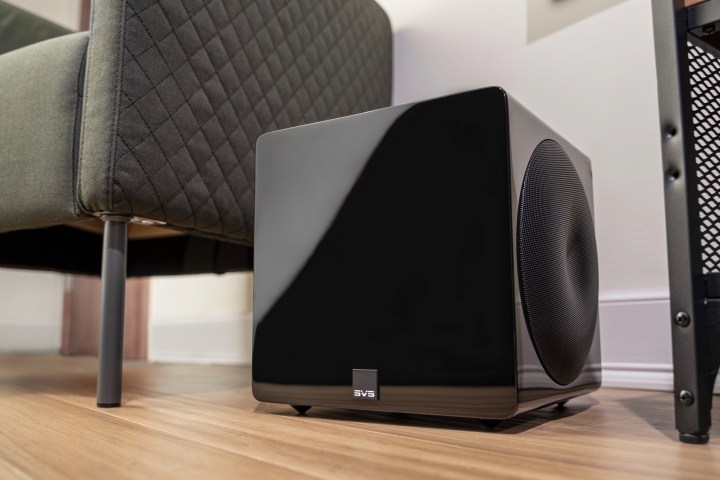
What isn’t there to say about ? Founded in 1998 by a group of audio engineers in their garage (technical innovation has an uncanny knack for emerging in garages), the SVS team was initially intent on designing subwoofers and loudspeakers that delivered the kind of performance and value that wasn’t effectively being captured by the audio marketplace at the time (at least in SVS’ opinion).
Jumping ahead two-plus decades, SVS is still kicking down our doors and rocking our LFE dreams with a sonically superior plethora of bookshelf and tower speakers, wireless audio, and, you guessed it, gloriously seismic subwoofers. And you’re getting all of these options (and more) at undeniably aggressive prices.
To drive it all home, let us lean on the million-dollar words of Digital Trends Editor at Large, Caleb Denison: “How am I getting sound this good at this price?”
What is the SVS calling card?
Subwoofers, baby. All day, every day.
It’s the , and it’s the speaker niche the brand has always been renowned for. SVS subs are designed for precision, profound output, and sleek and modern finishes, as well as seamless handshaking with your other speakers. While we’re sure SVS would be happy with you buying all SVS gear, these are subwoofers that will sound great with pretty much any other brand on this list.
Starting with the and climbing all the way to the top of the hierarchy for the , nothing screams SVS like the royal rumblings of a pulse-pounding sub.
What is the best SVS speaker?
SVS is going to take home the gold for one of its wireless products — specifically, the SVS Prime Wireless Pro Powered Speaker System.
Rocking a 200-watt Class D amplifier, the SVS Prime Wireless system is streamable audio like you’ve never heard before.
Sometimes the “smart speaker” label is enough to turn an audiophile away, but we implore you to give the SVS Prime Wireless the benefit of the doubt. With its 200-watt Class D amplifier, 24-bit/192kHz DAC for the finest audio streaming you’ve ever heard, and a medley of wire-free and cabled connections, this is a smart speaker built like a passive hi-fi workhorse.
Give it a go — you won’t be disappointed. Well, maybe except for the DTS Play-Fi app’s small list of limitations, although we’re betting this is something everyone can look past.
Read our full review of the SVS Prime Wireless Pro Powered Speaker System
Sonos
Laying down the red carpet for whole-home audio
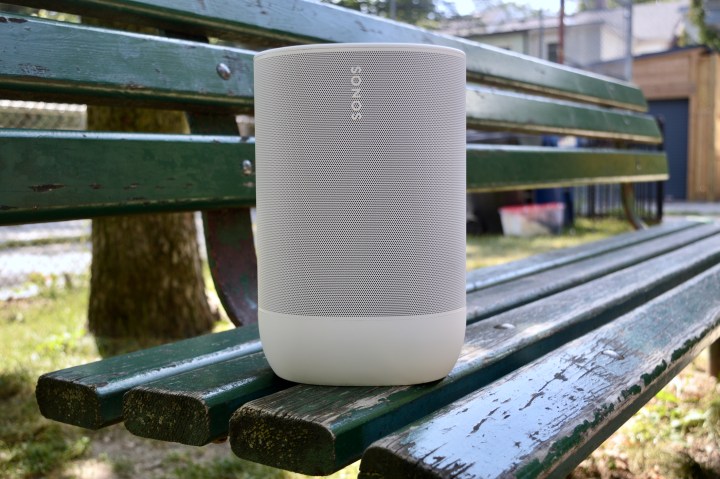
And last, but certainly not least, we come to Sonos — user-friendly, lovely sounding, competitively priced, ever-expandable, and infinitely customizable Sonos.
With a success story that will bring a tear to any entrepreneur’s eye, Sonos’ four founders — John MacFarlane, Tom Cullen, Trung Mai, and Craig Shelburne — placed their bets on four major insights based on the groundbreaking rollout of the Internet as we know it, a tetrad of principles that spelled success for the Santa Barbara collective:
- The internet is a moldable tool.
- Computer circuitry and other hardware peripherals were becoming evermore cost-friendly.
- Based on what developers were buying, digitization was reaching a new zenith.
- Networking protocols at the highest levels would trickle down to the zip-coded broadband of today.
Collectively, all of the above means that the dawning of the internet era meant software developers could have a field day with web-connected tech. The world just wasn’t expecting these four horsemen to be audio pioneers, too.
What is the Sonos calling card?
All together now: Wireless. Whole. Home. Audio.
From its fully portable Bluetooth-and-Wi-Fi capable speakers like the Move 2 and Roam 2, to its largwer speakers like the Era 300 and chest-thumping Subs, Sonos harnesses the power of your Wi-Fi network as the lifeblood of its arsenal of audio. Once connected and paired, Sonos creates a mesh network for its hardware that allows you to tie all of your TV sound, music, radio, and podcasts together into one easy-to-use platform. With simple dongle connectivity, you can also hook up your turntable and play records through a Sonos network system, too.
Even though the once-superb Sonos app has been going through some growing pains of late, we have high hopes that it will return to its former glory. With it you can create custom groups for all your speakers, play the same song on all of your networked speakers at once, adjust bass and treble for individual components, listen to Sonos’ excellent curation of internet radio services, and so much more.
And with amazing technology like Sonos Trueplay, your speaker or soundbar will calibrate itself based on the listening environment you’ve placed it in.
Here’s another inspiring tidbit from our very own Caleb Denison: “Sonos did for audio what Apple did for iPhones.” Yeah, that about sums things up. The company has even jumped into the headphone spaces with its well received Sonos Ace cans.
What is the best Sonos speaker?
We haven’t called out an excellent soundbar yet, and what better way to award the category than through the Dolby Atmos-inspired engineering of the mighty Sonos Arc?
Yes, Sonos makes much less expensive soundbars, such as the fine Sonos Ray that do a great job of making your TV sound better than it has in years, but the Arc is built for so much more. Compatible with Alexa and Google Assistant (and its own new Sonos Voice Control), the Sonos Arc doubles not only as a smart home controller for all of your home’s web-connected cameras, lights, and window blinds, but also as a standout replicator of a full Dolby Atmos system.
Does it sound exactly like a full Dolby Atmos configuration? No, but it’s damn close. Simulating Atmos sound is no walk in the park, and compared to other soundbars that take a stab at the feat, the Sonos Arc comes out on top. That’s not to mention that you can combine the Arc with a Sonos Sub and a set of rear surrounds, such as the Era 100 or Era 300 speakers, for an immersive spatial audio experience.
The only other thing we could possibly ask for is HDMI-switching (only an HDMI output), but that’s because we love the convenience of wiring all of our devices into one AV brain, and perhaps we’ll see this addition on a new generation of the hardware.
Read our full review of the Sonos Arc
Honorable mentions
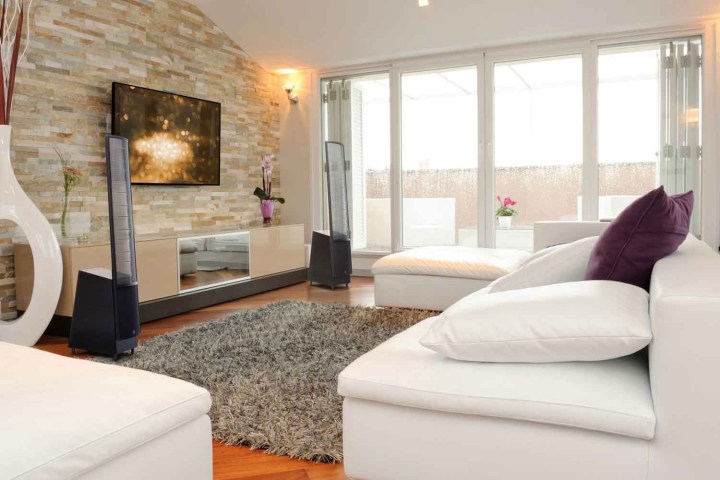
MartinLogan
The king of the electrostatic driver, MartinLogan has built up a prestigious reputation over the years. Touting an iconic look, the brand’s ElectroMotion series harnesses the power of the electrostatic transducer, as opposed to the traditional cone design utilized by most speaker companies. But what does this unique technology actually do?
For one, the transducer allows the ElectronMotion series to achieve accurate high-frequency distribution without cutting out other parts of the soundstage. In a way, you can think of the transducer as a midrange driver and tweeter as a single package. And in terms of bass, the ElectroMotions are also equipped with dual 8-inch woofers, filling out the sound spectrum in rich and exciting new ways, and additional speakers can be added for a full surround system. But these futuristic-looking speakers will cost you, ranging from $2,500 to $4,000.
Polk
Similar to a JBL or Klipsch, Polk has a big presence in the audio marketplace, across multiple product categories. Looking to outfit your car with a dynamic audio system? There’s a Polk solution for that. Looking for an awesome set of home theater speakers or dedicated hi-fi bookshelves? There’s a Polk solution for that, too.
And with Polk, not only are you getting expertly made speakers, soundbars, and other sound peripherals, but you’ll be paying some affordable prices for these items, too.
Sonus Faber
And for our “money is no object” pick, there’s Sonus Faber. Owned by the prestigious McIntosh Group, if Italian-styled hi-fi is what you’re after the ultra high-end, multi-award-winning Sonus Faber family is the speaker brand for you. Ultra-boutique and divinely engineered, Sonus speakers look amazing and sound simply unbelievable.
Whether you’re shopping for their much more affordable wireless all-in-one system, at roughly $2,000, or want to net yourself a set of the beautifully crafted Il Cremonese floor standers at a gasp-worthy $62,000, you’re guaranteed the best with every Sonus Faber purchase.

![The JBL Xtreme 4 Bluetooth speaker. [Embargoed image 06/03]](https://www.digitaltrends.com/wp-content/uploads/2024/05/jbl-xtreme-4-review-buttons-on-beach-chair.jpeg?fit=720%2C720&p=1)



